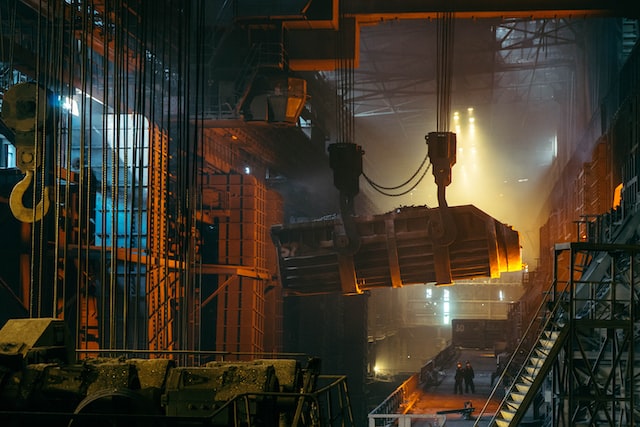Bridge cranes can be used for many material-handling applications in various industries. They can be adapted to fit any work area and are flexible enough to handle multiple production processes in one location.
They are available in four general configurations. These are single-girder, double-girder, under running and overrunning.

Single Girder
If a light to medium-duty crane best addresses your needs or if you have limited headroom, a single girder bridge crane system may be the right solution for your application. A single girder overhead crane system comprises one beam supported by two end trucks (one on each side of the bridge).
The hoist and trolley run along the bottom flange of the beam. Depending on your requirements, the girder can be top running or under running.
These overhead bridge cranes are typically used in steel fabrication, coil handling, power, defence, railroad construction, energy, plastics and ship construction. They also work well in specialised medical, semi-conductor and food production environments.
Several types of single-girder bridge cranes include top-running, under-running and underhung. Each style has its benefits and can be tailored to your specific needs.
Double Girder
Double girder bridge crane systems are a more robust solution for heavier loads, higher speeds, and longer spans than can be supported by single girder systems. They feature two bridge beams that run parallel to each other and are supported by end trucks. The hoist and trolley travel along both beams for maximum lifting capability.
This type of crane is typically top running in design, which allows more overhead room and provides the optimum hook height. In addition, it increases your hoist’s lift capacity by anywhere from 18” to 36 inches more than a single girder system.
In some cases, a double girder bridge crane can also be under-running, which offers an additional 3 feet or more of headroom under the runway beams. It’s an excellent option for industrial facilities that have limited building height.
These cranes are suitable for heavy industrial applications such as manufacturing, steel fabrication, equipment repair, energy, metals and plastics, mining, scrap handling, oil refining, and food processing. They are also suited for hazardous environments that require speciality construction materials, such as heat, chemicals, fumes, steam, dust or moisture.
Under Running
When you need a crane that spans long distances but your building doesn’t have much headroom, an under-running bridge crane may be the best option for you. They offer a similar design as a top-running crane but require less headroom because the rails are mounted below the runway beams instead of above them.
This type of crane also offers several other benefits. For example, they’re easier to service and maintain than top-running cranes.
They can also be a good choice for applications that don’t need as heavy a lift. However, you’ll want to consider your weight and space requirements before making this decision.
Another benefit of under-running systems is that they can be ceiling supported for maximum floor space utilisation. This is a great way to maximise the use of your factory floors without sacrificing lifting capacity.
Over Running
If your facility can handle loads at higher capacities, you’ll want to consider a top-running bridge crane system. These cranes are larger than under-running cranes and can safely manipulate loads up to 15 tons.
They can also handle heavier and wider loads than under-running cranes. So whether you need a single or double girder design, these cranes can easily be configured to meet your specific application and requirements.
This type of bridge crane system is usually used in facilities with a low headroom situation. It features wheels that run on the bottom flange of the beam bridge.
The hoist and trolley are mounted to the bottom of the bridge girder, which means it has a lower hook height than a top-running crane. It may also be more expensive to purchase and operate, depending on the equipment chosen. Electric or hand-powered trolleys are available for this type of crane.

Liam focuses on delivering timely news and actionable advice, ensuring readers stay informed and equipped with useful knowledge.


